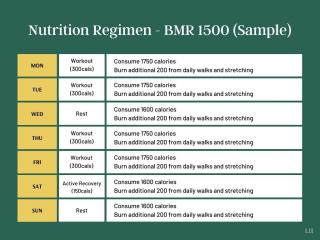In 1911 Frederick Taylor, an American engineer turned management consultant, published a book, The Principles of Scientific Management, which revolutionized practices for workplace efficiency through the productivity formula.
In the book, Taylor proposed the idea that employee productivity and motivation could be altered by changing specific variables. By optimizing these variables, companies could maximize workplace efficiency and profits, while minimizing costs and eliminating inefficiency.
Since Taylor’s ideas were published several decades ago, these important variables have been integrated into a simple equation that managers and leaders use to measure and improve employee motivation and productivity.
The simple equation is called the productivity formula, and here’s how it works.
What Is the Productivity Formula?
The productivity formula is a measure of the productivity of an economy, organization, team, or employee. In the context of a company, it provides a useful indication of how efficiently a company converts raw materials, machines, and groups of employees into useful goods or services.
This can be represented in the surprisingly simple productivity formula:
The productivity formula is a basic relationship between physical input and output variables. The most common inputs are labor productivity hours, capital, and materials, and the most common output units are sales and amount of goods produced.
A company that produces more with a given variable of inputs (capital, labor, and materials) or uses fewer inputs to produce the same level of output has greater productivity. This creates a competitive advantage over a company that produces a lower amount.
The productivity formula illustrates how a company can increase units of output produced per employee hour, machine, or material used.
How to Use the Productivity Formula
As an example, a manager may want to calculate the productivity of the employees of his/her company or team.
In order to do this, employee productivity can be calculated by dividing the goods and services produced or sales revenue generated by the total number of hours the company’s employees worked in a given period of time.
For example, consider an employee called Tom who made sales worth $2,000 in one week of 50 hours worth of work. Another employee called Jill worked 20 hours a week and made $1000 worth of sales. Using the productivity formula:
Tom’s productivity: $2000/50hrs = $40/hour
Jill’s productivity: $1000/20hrs =$50/hour
In this hypothetical scenario, Jill is more productive than Tom, even though Jill generated less sales than Tom.
Here’s another example:
Imagine a retail company looking to measure its productivity. If the output of last month’s production was 20,000 units, and the total employees hours worked was 2,000 hours, then based on the productivity formula:
Company productivity: 20,000 units/ 2,000 hours= 10 units/hour
As a final example, consider a heavily automated production line with a small number of staff. If in a month, the production line produces $1 million dollars worth of goods with 1000 total hours worked, then the company productivity is:
Company productivity: $1,000,000/1000 = $1000/hour
Even though the labor cost is much smaller than the cost of equipment, a company that invests in the efficient use of technology will gain a competitive advantage and improve company productivity.
Managers can use this formula to determine which employees are the most and least productive, or measure the efficiency of a company in using its resources and materials.
Nevertheless, this version of the productivity formula is limited due to its simplicity and restriction in variables.
As per the examples above, this productivity formula only uses single units for input and output to calculate the level of productivity, and that’s why it’s described as a partial factor productivity.
For a more accurate measurement, a company will need more inputs and outputs to calculate its overall productivity.
This is where the multi-factor productivity formula could be useful.
The Multi-Factor Productivity Formula
As previously noted, the partial or single-factor productivity formula is limited as a wholesome measure of productivity.
The multi-factor productivity formula helps managers measure the productivity of various departments across a company.
With this formula, productivity is measured by comparing output to various inputs necessary for production. This includes ratios of units produced to materials, labor, and capital.
For example, switching one variable for another, i.e. labor for capital, could produce a significantly different productivity figure. A more efficient measure of productivity should take into account the different substitutes for input and output and accurately represent how they affect company productivity.
Whereas the partial factor productivity formula uses one single input, the multi-factor productivity formula is the ratio of total outputs to a subset of inputs. For example, an equation could measure the ratio of output to labor, materials, and capital. This method is a more comprehensive measure than partial factor productivity, but it’s also harder to calculate.
For example, imagine a car manufacturing company that purchases advanced machine equipment to increase its production. Assuming this equipment enables the company to reduce the number of employees and costs 40% more than a standard machine, output will remain the same.
But since the number of employees has reduced, the labor and capital productivity of the company will increase. And there will be a decline by 40% in material productivity since output is constant and purchased material has increased.
As a further consideration, a Total Factor Productivity formula will take into account all inputs used in a production process and provide a more accurate assessment of company productivity and performance.
How to Improve Employee Productivity With the Formula
Here are 3 strategies based on the productivity formula to improve employee productivity:
1. Measure and Improve the Efficient Use of Time
Time, though not purchased, is often mistakenly ignored as a cost.
For example, if two companies have identical equipment, staff, products, and material, but one business takes two weeks longer than the other to ship order purchases, their productivity is not the same.
Managers who work with employees to maximize the amount of time spent on tasks that align with their strengths and minimize time spent on everything else will improve employee productivity.
2. Promote Employee Autonomy
In his book, Management Challenges for the 21st Century, legendary management expert Peter Drucker writes that:
“The demands that we impose the responsibility for their productivity on the individual knowledge workers themselves. Knowledge Workers have to manage themselves. They have to have autonomy.”
Various studies have shown that human beings derive the greatest levels of motivation and satisfaction from achieving goals that are self-determined, so this is essential to think about regarding the productivity formula.
Self-determined goals increase intrinsic motivation—i.e. the desire to do something for its own sake—rather than extrinsic motivation.
Intrinsically motivated people take more action on a given task, persist in the face of adversity, explore more creative ideas, enjoy their work, and perform better.
The more autonomy and ownership employees have over their work role, the more productive they will be.
Managers who include employees in setting goals and give them the autonomy to execute on them can significantly improve their productivity.
3. Encourage Team Empathy
In Smarter Faster Better: The Secrets of Productivity in Life and Business, author Charles Duhigg describes the story of how Google improved their team performance through “Project Aristotle,” an extensive research project analyzing team productivity.
At the end of their research period, Google discovered that the best teams weren’t necessarily a collective of individual top performers, but rather a collective of individuals who shared empathy with one other.
Teams that encouraged members to listen to one another and show sensitivity to each others needs performed the best.
That is why people with high emotional intelligence tend to be the best leaders in a group setting. They tap into the emotional component of human motivation to get the most out of the people around them.
Final Thoughts
The productivity formula is a simple, useful tool to quantify, measure, and manage employee productivity.
As a standalone benchmark of productivity, it may not be sufficient as a measure of productivity that takes into account the complexities of a company. The best way for managers to use the productivity formula to motivate employees is to incorporate the people element.
By maximizing time efficiencies and promoting employee autonomy and team empathy, managers can build a workplace culture that encourages long term productivity and satisfaction.
More Tips on Improving Productivity
Featured photo credit: Stanley Dai via unsplash.com





























































